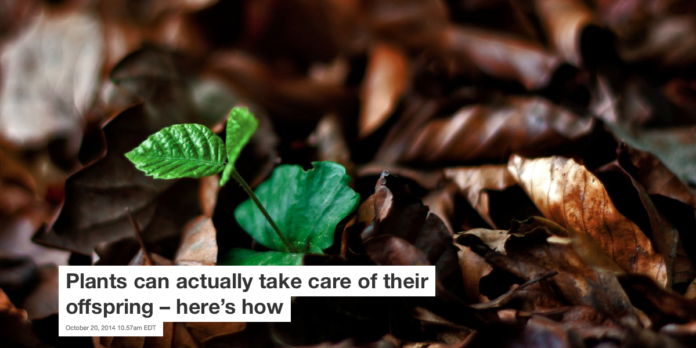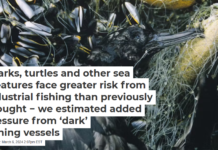
By Bianca A. Santini, University of Sheffield
Plants may not travel around as animals do, but they have evolved many strategies that allow them to cope and make the most of the environment they live in. Examples can be found everywhere. For instance, succulence is the special characteristic that cacti have to store water and then use it as a reserve in their dry habitats. And there are plants that produce seeds that are dispersed by wind, allowing them to travel farther than they could possibly have gone otherwise.
What is not yet quite accepted is that plants can also take care of their “children”, or seedlings. This is partly because it is well known that plants do not have a nervous system and therefore they don’t have a “will” to protect their descendants. But, in fact, they do have mechanisms for offspring care.
One example in which offspring care is observed in plants is in the little cactus (less than 3cm in diameter) called Mammillaria hernandezii. This inhabits a semi-arid zone in Mexico, where rain is a scarce resource and comes intermittently. So the plants that inhabits this type of habitat go through cycles of hydration and dehydration.
The special characteristic about M. hernandezii is that it is serotinous, which means that it will keep a portion of the seeds that it produces inside the stem, and release the rest. Being serotinous has many advantages. It can help in protecting the offspring from seed hunters, such as ants. It can also allow the delayed release of seeds when conditions in the environment are best for germination.

carnwrite, CC BY-NC-ND
In a study we compared seeds that were kept inside the parent plant for a year, against recently produced seeds that are not kept inside the parental plant. We looked at various aspects to evaluate whether the parent plant is looking after its offspring.
First we tested differences in germination in survival percentage and found that older seeds, kept inside the parental plant, germinate and survive more than young seeds, which are released immediately after their production.
We also found that older seeds possessed special proteins, which indicated that these seeds had experienced the rain pulses and the periods of drought. This adaptation to its natural environment wasn’t present in young seeds that hadn’t had the time to experience these environmental changes.
Then we also found that young seeds that are released in the soil were more likely to be eaten by predators or rotted by micro-organisms compared to older seeds that had been protected inside the parental plant.
And finally, we wanted to find out whether the release of seeds was triggered by the presence of water. And it seems that, in the presence of enough water, older seeds kept inside the parental plant are indeed released into the soil for germination.
In short, while inside the mother plant, the seeds experience the stress of the habitat they live in, including pulses of rain and the lack of it. But by learning from this experience, while still being protected by the mother plant, the seeds are more prepared to face the unpredictability of their habitat. The seeds do this by producing special proteins that make them stronger when it comes to germination.
Another mechanism plants have for giving their offspring a head start involves sharing roots with their parent. This is thought to ensure the seedling a good start, until it can be independent enough to survive from its own roots and nutrients.
Many other plants have evolved this feature of seed retention (or serotiny). Take the example of serotinous conifers found in areas where forest fires are common. In their case, the cue to release the seeds from the mother plant is not water but fire. The thing these plants share in common is the fact that the parental plant will look after its little babies and will protect them in order to ensure them a better future.
![]()
Bianca A. Santini receives funding from The National Council of Science and Technology in Mexico (CONACyT).
This article was originally published on The Conversation.
Read the original article.




















